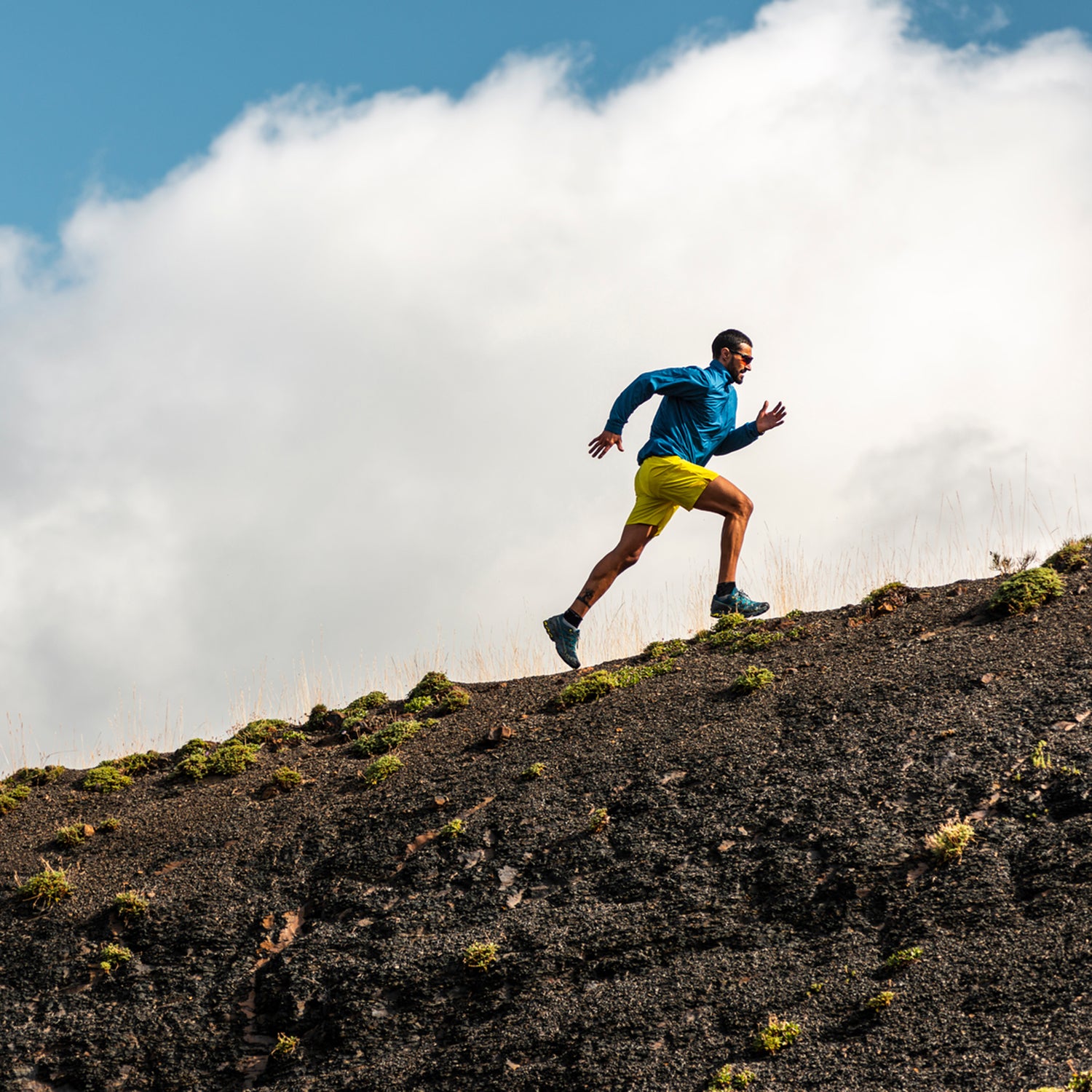Two weeks into his 38-day solo row across the North Atlantic, Bryce Carlson got a disturbing update from his weather team. Hurricane Chris’s 90-mile-per-hour winds were stirring up 45-foot waves, much more than his 20-foot rowboat could handle—and the storm was headed his way. He veered south to avoid its path, but that meant rowing directly into the prevailing winds for three days, virtually nonstop. “I was fighting it straight on,” he says. “It took every ounce of energy I had to not drift north.” Still, he didn’t call off the attempt.
Every sport demands its own superpowers, and extreme athletes are distinguished by their willingness to tolerate, even embrace, suffering. In one study, ultrarunners rated the discomfort of a three-minute ice-water test as a mere six out of ten; the nonathlete controls barely made it halfway through before giving up. What allows athletes like Carlson, an otherwise unassuming high school teacher, to soak up so much pain? And how can the rest of us learn from them?
In 2016, a team led by Kevin Alschuler, a psychologist at the University of Washington School of Medicine, in a series of 155-mile footraces across the Atacama, Gobi, and Namibian deserts. Alschuler and his colleagues wanted to understand why, even among hardened ultra-athletes, some were better than others at grinning and bearing it. They found a clear link between the runners’ coping strategies and how likely they were to make it to the finish. Tactics like reframing the pain as a challenge, refusing to let it bother them, or simply ignoring it were considered helpful “adaptive” approaches. Feeling frightened or defeated by pain, or interpreting it as a signal to stop, were considered “maladaptive.” Each athlete was assigned two scores from zero to six for use of adaptive and maladaptive strategies; for every single-point increase in the maladaptive score, odds of dropping out tripled.

Alschuler performed a similar analysis of Carlson’s 2018 row, in Wilderness and Environmental Medicine last year. Each day, Carlson journaled about his greatest challenge and how he dealt with it, and filled out questionnaires that included numerical ratings of pain, fatigue, anxiety, and other feelings—a task made more complicated when his boat capsized on the fifth day of the voyage, trashing the laptop he’d brought along for that purpose. (He filed subsequent reports by satellite phone instead.)
Given his long history of ultra-endurance feats, it’s not surprising that Carlson had a robust tool kit of pain-coping strategies. When faced with psychological discomfort from anxiety and loneliness, Carlson turned to distraction. For physical stressors, he tried active problem-solving. If that didn’t fix it, he shifted his strategy to acceptance.
The importance of acceptance is something Alschuler emphasizes in his clinical work as a rehabilitation psychologist working with patients who have chronic medical conditions.
“A patient and I will talk through their options, and it’s option A or option B,” he says. “And they want option C, which doesn’t exist.” In these situations, it can be challenging—but also crucial—for patients to accept that getting rid of pain entirely isn’t an option. “I think our ultra-athletes, like Bryce, all seem to do a really good job of saying, Well, option C is off the table, and what’s in front of me is either A or B.”
To help develop that willingness to coexist with discomfort, Alschuler uses cognitive behavioral therapy, acceptance and commitment therapy, and mindfulness. Even the simple tools offered by apps like and can impart valuable skills, he says. Learning to stay present can assist us in avoiding some of the most debilitating responses, such as pain catastrophizing—the tendency, say, to assume that every ache in your joints is the harbinger of a career-ending injury, which makes the pain feel worse.
Staying in the present was crucial for Carlson as he struggled to steer out of the path of the hurricane. “It was just one hour at a time,” he recalls. “I tried to remind myself that there are things I can control and things I can’t—and for the things I can’t control, I can’t allow myself to worry about them.” Eventually, it became clear that he wouldn’t be able to avoid the storm, which was gradually weakening. As with so many other challenges he encountered on the trip, he’d have to live with it. “The best thing to do is not fight the waves,” he says. “Just run with the wind. The wind is going to come. Run with it.”


